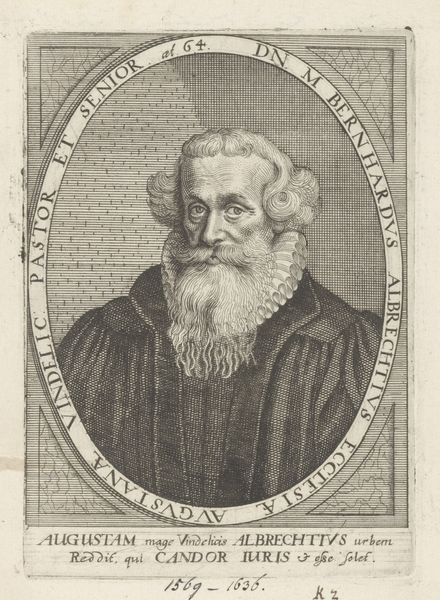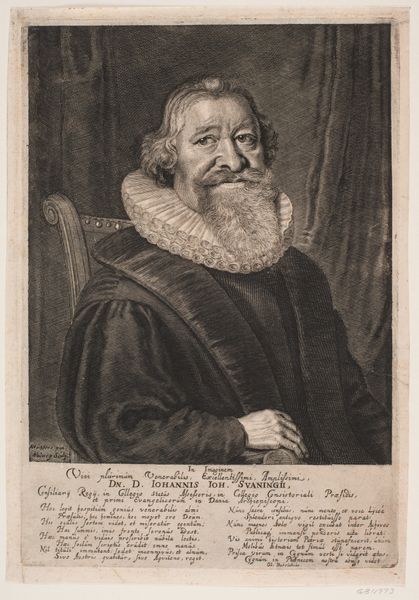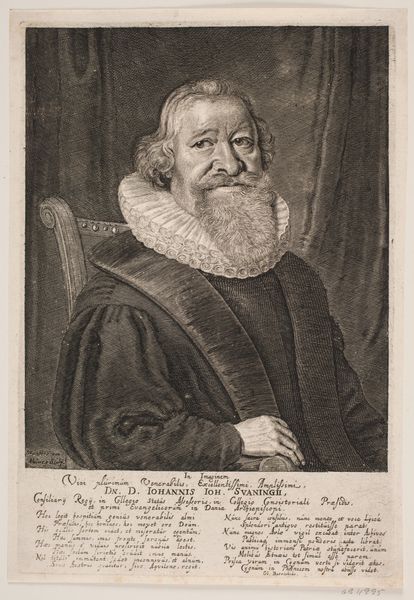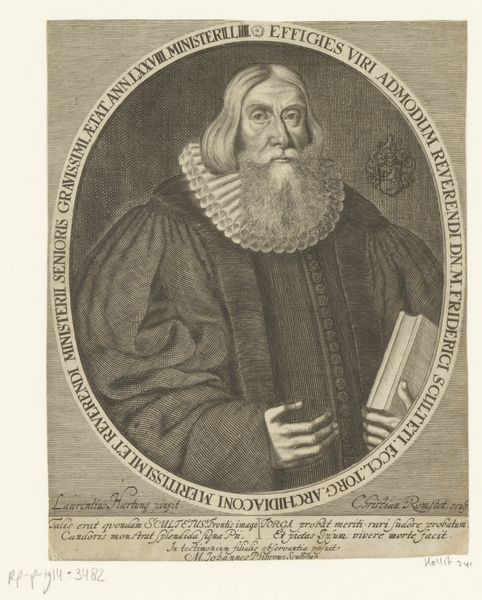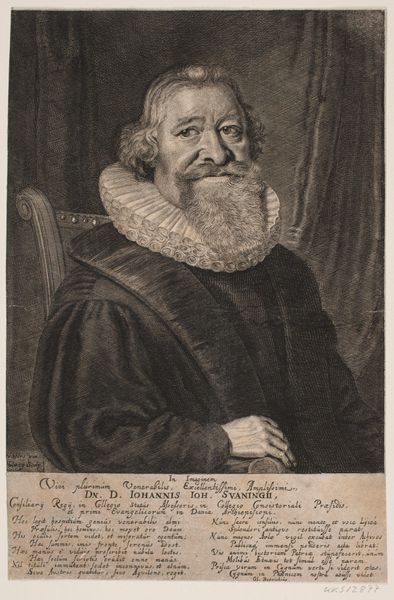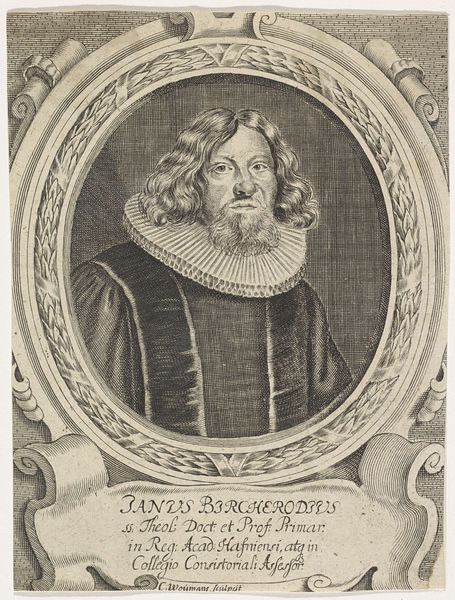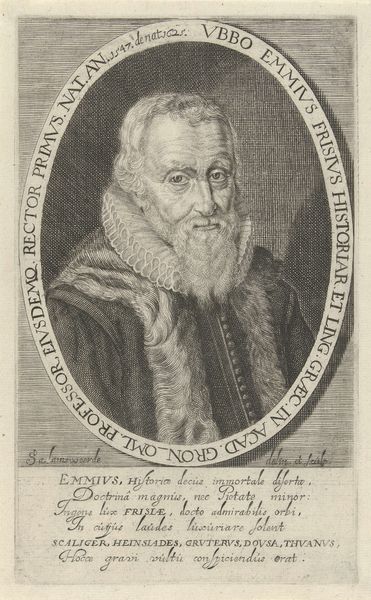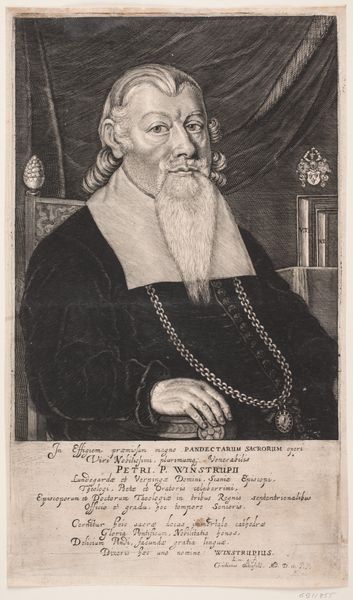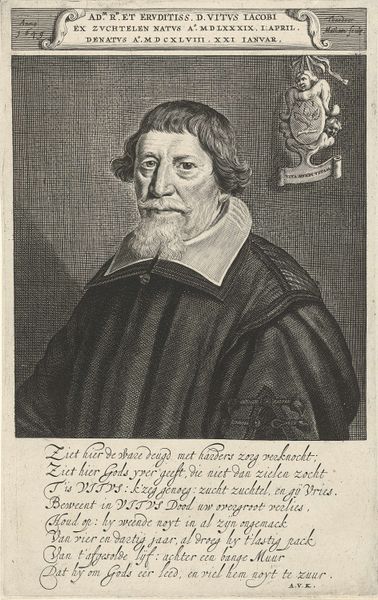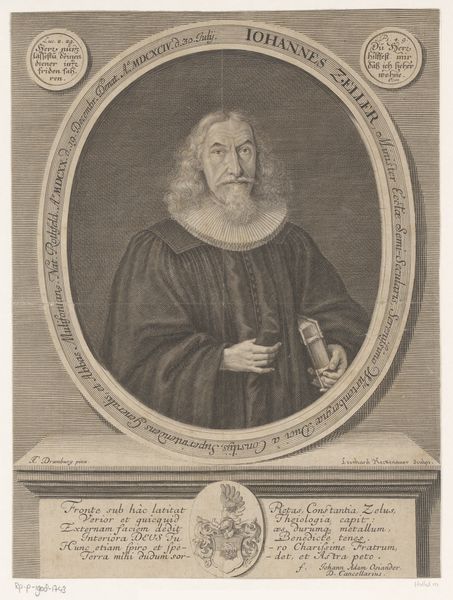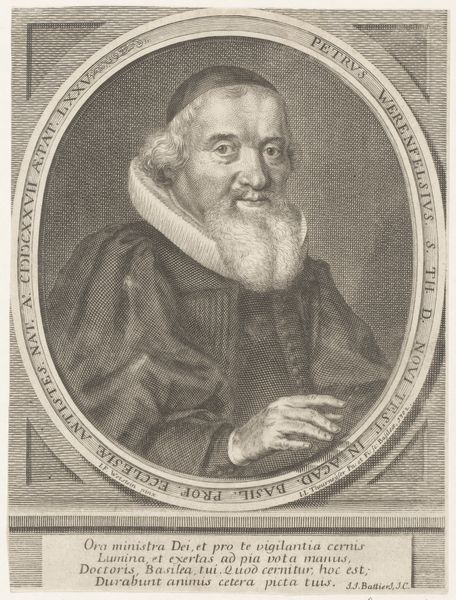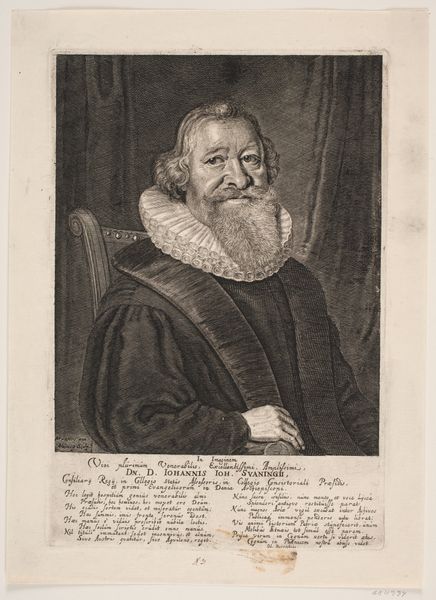
print, engraving
#
portrait
#
baroque
# print
#
figuration
#
engraving
Dimensions: 273 mm (height) x 177 mm (width) (bladmaal)
Curator: We’re looking at an engraving titled "Erik O. Torm," made in the 1660s by Albert Haelwegh. It's a striking portrait held in the collection of the Statens Museum for Kunst. Editor: The overwhelming sensation is severity. The somber blacks and whites really focus my attention on his face, particularly the stark, heavily lined features, contrasting with the fluffy beard and lace collar. Curator: It's an excellent example of Baroque portraiture using the medium of print. Haelwegh captures detail masterfully. You see it in the rendering of the textures – the ruff, the folds of his robe, even the subtle variations in the background drapery. This print showcases Torm, not just as an individual, but also hints at his respected standing in society, as demonstrated by the writing included under the portrait, celebrating his standing as pastor, mathematician, and professor. Editor: Definitely. That gaze is unwavering, confronting us. I'm interested in how this portrait participates in establishing authority. This man likely held significant religious and intellectual power. His ornate dress—that voluminous robe and exaggerated collar—speak to his identity and role. How might societal roles affect perceptions of individual worth in the 17th century? How did clothing reinforce hierarchy? Curator: Such details absolutely communicate status and profession during this era. But structurally, consider how Haelwegh uses light and shadow. See the way light illuminates Torm’s face, drawing the eye directly, while the darker background flattens the perspective and pushes him forward, making his expression unavoidable, emphasizing a deliberate composition design, one to venerate its subject by design. Editor: It’s all very controlled. Almost propagandistic. This makes me think about representation and control. How are we, even now, influenced by images constructed to project particular ideologies or perspectives about the sitter? Curator: Indeed, portraits like this offered controlled representations. On that note, let's allow others to contemplate how their interpretation reflects today's world in dialogue with the past. Editor: Precisely! Thinking critically about whose stories are visualized—and how—remains perpetually relevant to dismantling dominant cultural narratives.
Comments
No comments
Be the first to comment and join the conversation on the ultimate creative platform.
